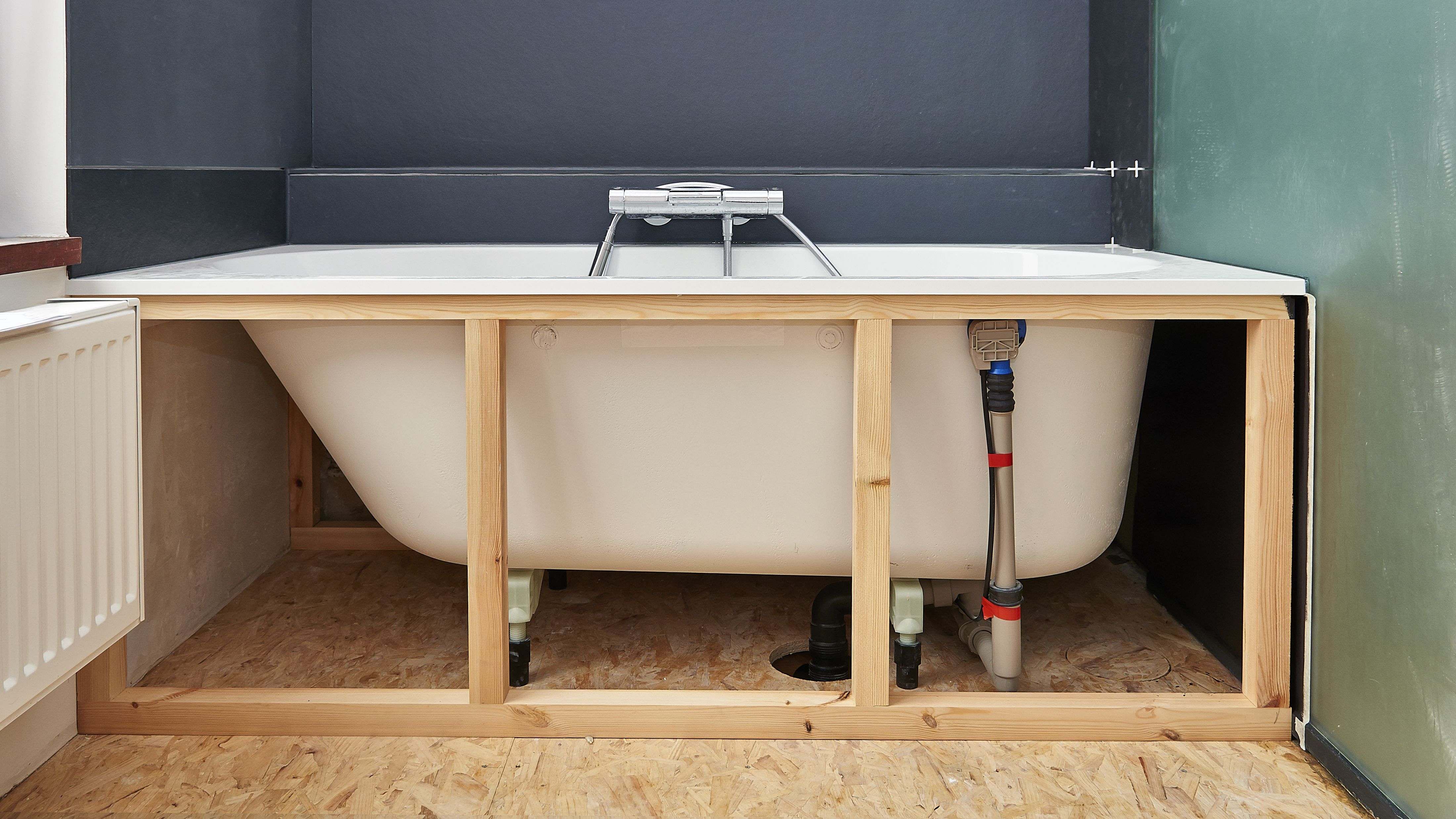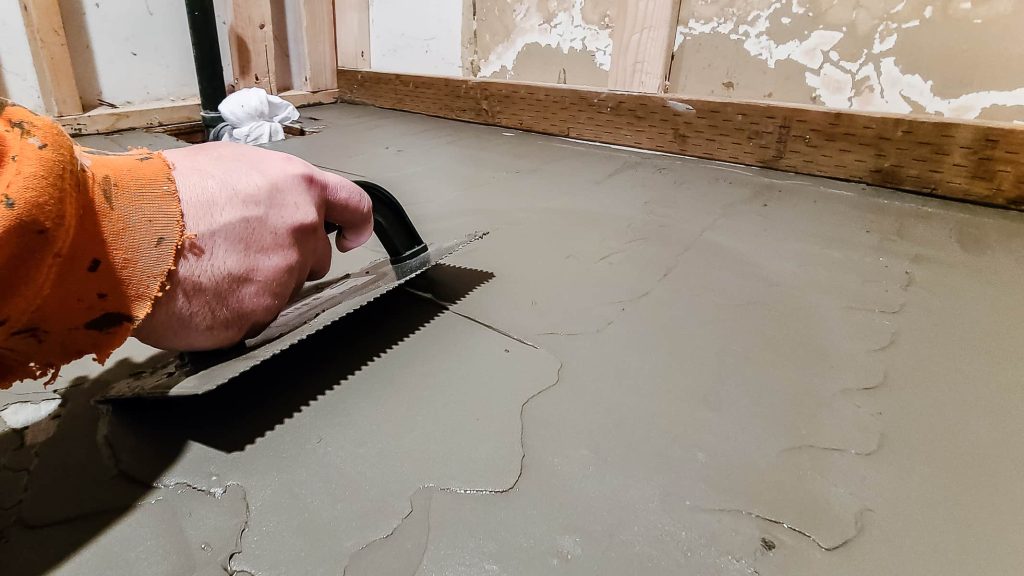This article below in relation to Installing A Bathtub is definitely fascinating. Don't skip it.

Installing a tub isn't specifically brain surgery, but it does need strong plumbing, carpentry, and also sometimes, tiling abilities. Replacing an old bathtub with a brand-new one is likewise a moderately hard job. If the old bathtub is conveniently available, the task can relocate rapidly; if you need to open up a wall to remove the old tub and also place the brand-new bath tub, the task is much harder. In either situation, the job is within a residence handyman's abilities, although you will need a helper to vacate the old bathtub and set in the new one. Make certain you have actually certified yourself for the job as well as fit attempting it. Instead of employing a specialist to take control of a halfway-completed task, it is better to take into consideration employing one before you start. Opportunities are you might require a professional plumber to make tube links.
This article will certainly aid you mount a brand-new tub in your washroom if you have actually currently acquired a brand-new tub as well as don't need to change the setup of your previous water pipelines.
Your devices and also product list must make up the following:
Removing Old Taps
If you need to replace old faucets with brand-new ones as a part of your installment, after that the first thing you must do is detach the water system. After doing so, switch on the taps to drain any type of water staying in the system. The process of removing the existing faucets can be fairly troublesome because of the limited accessibility that is commonly the situation.
Utilize a container wrench (crowsfoot spanner) or a faucet tool to undo the nut that attaches the supply pipelines to the taps. Have a cloth all set for the continuing to be water that will certainly originate from the pipes. Once the supply pipelines have actually been eliminated, use the exact same tool to loosen the nut that holds the faucets onto the bath/basin. You will need to quit the solitary taps from transforming during this process. As soon as the taps have actually been eliminated, the holes in the bath/basin will need to be cleaned up of any old securing compound.
Before going on to fit the brand-new taps, contrast the pipe links on the old faucets to the new faucets. If the old taps are longer than the brand-new taps, after that a shank adapter is needed for the new faucets to fit.
Fitting New Taps
If the tails of the new faucets are plastic, then you will certainly require a plastic connector to prevent damages to the thread. One end of the connector fits on the plastic tail of the faucet and the various other end offers a link to the existing supply pipes.
If you require to fit a monobloc, then you will certainly require lowering couplers, which links the 10mm pipeline of the monobloc to the conventional 15mm supply pipe.
Next off, position the faucet in the mounting opening in the bath/basin ensuring that the washing machines are in area between the tap as well as the sink. Safeguard the tap in position with the producer given backnut. When the faucet is securely in position, the supply pipes can be linked to the tails of the taps. The faucets can either be linked by utilizing corrugated copper piping or with normal tap adapters. The former kind should be linked to the faucet ends initially, tightening only by hand. The supply pipes can later on be attached to the various other end. Tighten both ends with a spanner after both ends have actually been attached.
Installing the Bath tub
Using the two wood boards under its feet, place the tub in the called for position. The wood boards are handy in equally spreading the weight of the tub over the location of the boards instead of focusing all the weight onto 4 tiny points.
The next objective is to ensure that the bathtub is leveled all round. This can be achieved by examining the spirit level as well as readjusting the feet on the bathtub up until the level reviews level.
To set up faucets, fit all-time low of the furthest versatile faucet adapter to the appropriate supply pipe by making a compression sign up with; then do the exact same for the other faucet.
Activate the water supply and inspect all joints and also brand-new pipework for leaks and tighten them if essential. Fill the tub and likewise inspect the overflow electrical outlet and also the regular outlet for leaks.
Ultimately, repair the bath paneling as described in the manufacturer's user's manual. Tiling and also sealing around the tub should wait until the tub has been utilized a minimum of once as this will certainly resolve it right into its last placement.
Planning for the Setup
First of all, the supporting framework supplied with the bath ought to be fitted (if needed) according to the producer's directions. Next, fit the taps or mixer to the bathtub. When fitting the tap block, it is essential to ensure that if the faucet includes a plastic washer, it is fitted between the bath and the faucets. On a plastic bathroom, it is additionally reasonable to fit a sustaining plate under the faucets system to avoid stress on the bathtub.
Fit the versatile tap connectors to the bottom of the two taps using 2 nuts and also olives (sometimes supplied with the bathtub). Fit the plug-hole electrical outlet by smearing mastic filler round the sink electrical outlet opening, and after that pass the outlet with the hole in the bath. Use the nut supplied by the maker to fit the plug-hole. Take a look at the plug-hole outlet for an inlet on the side for the overflow pipe.
Next off, fit completion of the adaptable overflow pipeline to the overflow outlet. Afterwards, screw the pipe to the overflow face which ought to be fitted inside the bath. Ensure you utilize all of the supplied washers.
Connect the catch to the bottom of the waste electrical outlet on the bath tub by winding the string of the waste electrical outlet with silicone mastic or PTFE tape, and screw on the catch to the outlet. Connect the bottom of the overflow tube in a comparable manner.The bathroom must currently be ready to be fitted in its final placement.
Tiling Around the Bath tub
In the location where the bath meets the tile, it is necessary to secure the accompanies a silicone rubber caulking. This is very important as the installation can move enough to crack an inflexible seal, triggering the water to permeate the wall in between the bathroom and also the tiling, bring about issues with wetness as well as possible leaks to the ceiling below.
You can select from a variety of coloured sealers to blend in your components as well as fittings. They are marketed in tubes and cartridges, as well as can sealing gaps as much as a size of 3mm (1/8 inch). If you have a bigger space to fill, you can fill it with twists of soaked paper or soft rope. Bear in mind to constantly fill the bath tub with water prior to sealing, to permit the motion experienced when the tub remains in use. The sealant can fracture relatively early if you do not take into account this motion before sealing.
Conversely, ceramic coving or quadrant tiles can be utilized to border the bath or shower tray. Plastic strips of coving, which are easy to use and also cut to dimension, are also quickly readily available on the market. It is suggested to fit the tiles utilizing waterproof or waterproof sticky and also grout.
A Step-by-Step Guide to Installing a Bathtub
Is your bathtub looking a bit dated lately? Believe it or not, installing a new one is a project you can do yourself. Whether your bathtub is broken or doesn’t fit in with your current bathroom’s design, you can fix it without having to hire a contractor or paying labour costs.
But, beyond saving money, there are other benefits of installing your own bathtub. When you do this project yourself, you can customise every step of the process. You can also make sure the finished product looks exactly the way you want it to.
This DIY project is quite involved, but by doing some research, preparing your bathroom and using the right equipment, it is definitely one you can take on. This guide will help you understand the technical procedures behind installing a new bathtub.
Remove the Existing Bathtub
To remove the old bathtub, you will need to turn the water supply off before you start any work. After you turn the water off, there will likely still be some water left in your plumbing system, which you can remove by turning on a faucet below the level of the bathtub. Once the water stops running, you are ready to start working.
The easiest way to remove the tub is to remove the faucet, handles and other piping and then pull the tub out from the wall. If this doesn’t work in your situation, you will need to remove part of the wall, remove the piping and then slide the tub out.
Choose the Right Bathtub
The ideal way to replace your bathtub is to find one that has the exact dimensions and has the drain and faucet on the same side as your old one. This way, it will fit in the same place and you won’t have to change the piping system in your bathroom. Choose a tub that matches your home’s decor and fits with the style of the bathroom.
Install the Plumbing and Ledger Board
You can purchase a tub drain kit at a hardware store which will have all the pieces you will need for your new tub’s plumbing. Follow the instructions that came with the kit to install the plumbing in the new tub and then take measurements to make sure the plumbing in the tub will align with the plumbing in your bathroom. If it doesn’t, now is the time to make necessary adjustments.
Some bathtubs need a ledger board that is installed on the wall behind the tub to help support it. If your new bathtub requires one, the directions that came with it will tell you how high it should be installed. If your old bathtub had a ledger board, and it is still in good condition, you can adjust its height to match the new bathtub.
Install the Bathtub
When the plumbing and ledger board are ready, you can install the new bathtub. Carefully lower it into the space, being careful not to damage the tub, wall, plumbing or ledger board. Since bathtubs are very heavy and you will need to line the tub up exactly, it is wise to have someone help you with this step.
Once the tub is in place, it needs to be perfectly level, so use a bubble level instead of estimating how level the tub is. Put the level on the top edge of the tub, not the bottom on the inside, since many tubs are designed with a sloped bottom.
If the bathtub isn’t level, adjust the ledger board and shift the tub until it is. When it is level, use screws to attach the tub to the wall studs. Most bathtubs have pre-drilled holes in the upper flange, so use these but do not over tighten the screws.
Hook up the Plumbing
Now that the bathtub is installed, it needs to be attached to your plumbing system. First, install the shoe fitting under the tub and drain pipe, then the overflow pipe and then the drain flange. Your tub plumbing kit will include specific instructions on how to install these pieces.
Install the Bathtub Surround
A bathtub surround will protect the walls around the tub from water damage and can give your new bathtub a more finished look. To install one, make sure the wall is completely clean and dry so that the adhesive will be able to hold the surround securely. Then, measure the surround and mark the same dimensions on the wall above the tub.
Following the directions that came with the surround adhesive, apply it to the wall. Press the surround against the wall on top of the adhesive and then pull it away for about three minutes to activate the adhesive, then apply the surround again. Keep in mind that this is the most common way to use an adhesive, but you should check the instructions on the package for any special steps.
If there is any excessive adhesive around the sides of the surround, you can use mineral spirits to remove it. Then use masking tape to hold the surround panels in place until the adhesive is dry. Using silicone, seal all the cracks between the surround panels and the gap between the bottom of the panels and the top of the bathtub.
If you want to install tile above your bathtub, instead of a bathtub surround, the process will be very similar. But, you will need to measure and cut tiles and install each one individually, using tile spacers to make sure they are evenly spaced. You will then use grout to fill in the spaces between the tiles.
https://www.hss.com/blog/bathroom/a-step-by-step-guide-to-installing-a-bathtub/

I was made aware of that write-up on Installing A Bathtub from an acquaintance on another web property. Do you know another person who is intrigued by the niche? Be sure promote it. I truly appreciate reading our article about How to Install a Bathtub Yourself.
Visit Our Website
 Emilio Estevez Then & Now!
Emilio Estevez Then & Now! Jonathan Taylor Thomas Then & Now!
Jonathan Taylor Thomas Then & Now! Michael Jordan Then & Now!
Michael Jordan Then & Now! Loni Anderson Then & Now!
Loni Anderson Then & Now! Pauley Perrette Then & Now!
Pauley Perrette Then & Now!